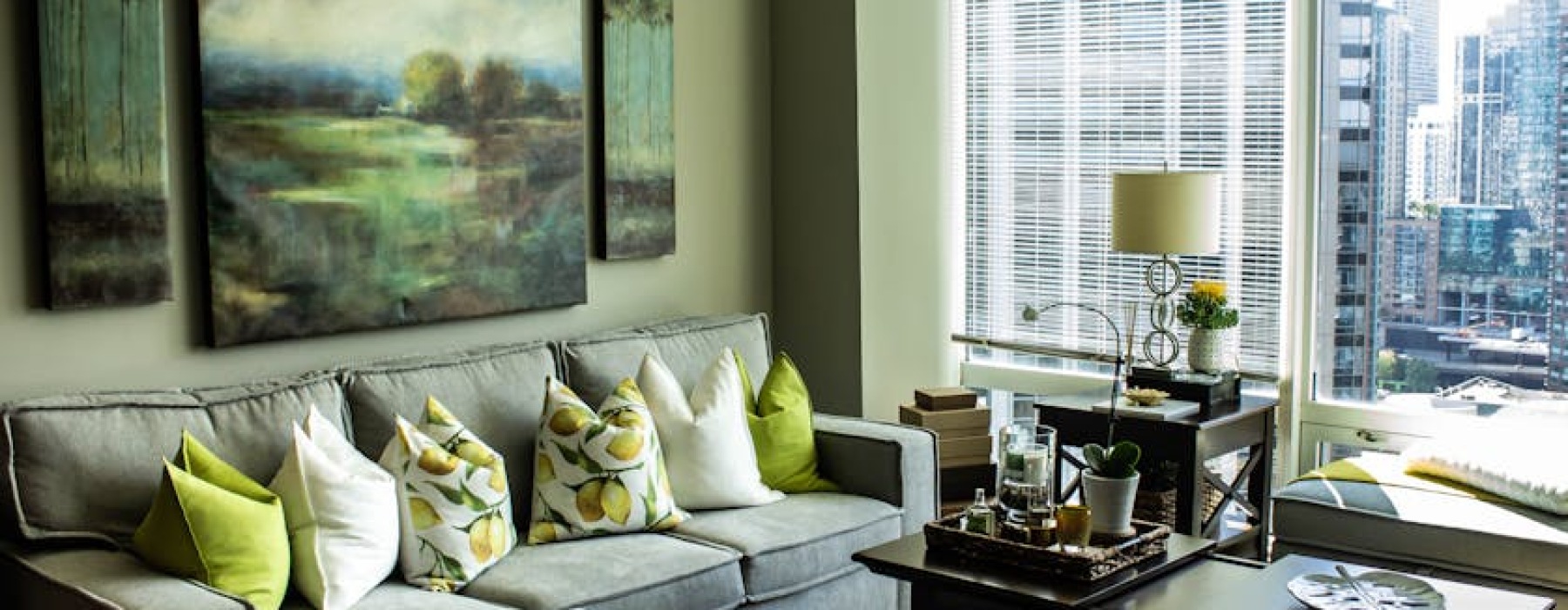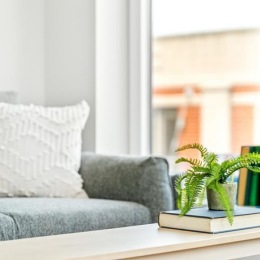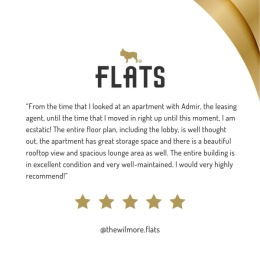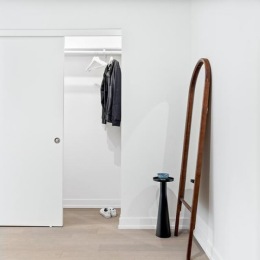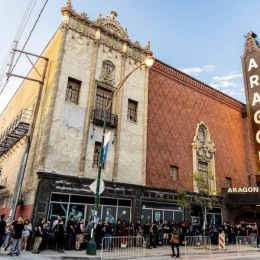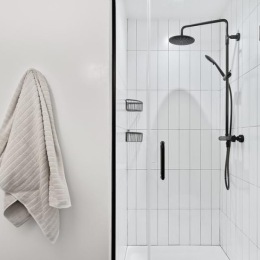Finding Your Perfect Accessible Home in Chicago
Accessible apartments Chicago offers over 2,268 wheelchair-accessible rental units across the city, from subsidized housing to luxury communities with full ADA compliance. Whether you need roll-in showers, wide doorways, or sensory accommodations, Chicago's rental market provides diverse options for people with disabilities.
Quick Guide to Finding Accessible Apartments in Chicago:
- Search Tools: Use MOPD's online housing locator at myhousingsearch.com/CHI or filter by "wheelchair access" on major rental sites
- Key Features: Look for 32" doorways, roll-in showers, grab bars, lever handles, and accessible parking
- Affordable Options: Apply for Section 8, ARO units (30% of income), or income-restricted communities
- Prime Areas: Streeterville has 183 accessible units; Avondale offers 100% accessible complexes like Milwaukee Avenue Apartments
- Support: Contact Mayor's Office for People with Disabilities (MOPD) for housing assistance and home modifications
Finding the right accessible apartment in Chicago means understanding both your specific needs and the city's housing landscape. The search involves more than just location and rent - you need to consider physical accessibility features, sensory accommodations, and your legal rights as a renter with disabilities.
Chicago's accessible housing market spans from fully-equipped communities designed specifically for people with motor and sensory disabilities to mainstream apartments with ADA-compliant modifications. The city's Mayor's Office for People with Disabilities provides comprehensive support, including an online housing locator and home modification programs.
What Makes an Apartment Accessible in Chicago?
Finding truly accessible apartments Chicago residents can call home means looking beyond surface-level features. Real accessibility touches every corner of daily life, from the moment you approach your building to how you prepare dinner in your kitchen.
Universal design principles create spaces that work beautifully for everyone, whether you use a wheelchair, have vision or hearing differences, or simply want a home that adapts to your changing needs over time.
Wide doorways form the foundation of accessible living - that 32-inch minimum clearance makes all the difference when navigating your space comfortably. But accessibility flows through every choice: lever-style handles that work with any grip strength, lowered switches and outlets positioned where you can reach them easily, and appliances placed within comfortable reach ranges.
Roll-in showers represent one of the most requested features in accessible housing. These barrier-free bathing spaces eliminate the struggle of stepping over tub edges, featuring no-step entry, reinforced walls ready for grab bars, and adjustable shower heads that move to meet your needs.
Kitchen accessibility transforms daily routines. Adjustable countertops and cabinets let you customize your workspace, while accessible sink heights and lever-type faucets make meal prep and cleanup effortless regardless of your mobility or strength.
Key Physical Features Checklist
When you're touring potential homes, these essential features separate truly accessible spaces from those with just basic compliance:
Step-free entry or properly sloped ramps (no steeper than 1:20) welcome you home without barriers. 32-inch doorways throughout the unit ensure smooth navigation between rooms. Your bathroom needs a 60-inch turning circle for comfortable wheelchair maneuvering, plus reinforced walls ready to support grab bars when you need them.
Non-slip flooring with minimal transitions between rooms prevents trips and falls. An accessible path from parking to your front door completes the journey home. Lowered electrical features - switches, outlets, and thermostats - put control within comfortable reach.
Sensory Accessibility Innovations
Modern accessible apartments Chicago offers extend far beyond mobility features. Visual alert systems replace traditional smoke detectors with flashing lights and vibrating bed shakers, ensuring everyone stays safe regardless of hearing ability.
Braille signage and tactile wayfinding elements help residents with vision differences steer common areas confidently. Smart home technology has revolutionized accessible living. Voice-controlled systems let you adjust lighting, temperature, and security through simple voice commands - perfect for residents with visual impairments or limited mobility.
Audio-visual notification systems keep everyone connected through dual alerts for doorbells, phone calls, and emergencies. These systems use both sound and flashing lights, ensuring important communications reach every resident effectively.
Understanding Your Housing Rights & Regulations
Knowing your rights as a renter with disabilities can make the difference between settling for less and finding the perfect accessible apartments Chicago has to offer. You have powerful legal protections that ensure fair treatment throughout your housing search.
The Americans with Disabilities Act (ADA) and Fair Housing Act work together to protect your right to accessible housing. These federal laws mean landlords cannot discriminate against you because of your disability, charge extra fees for reasonable modifications, or set different rental terms.
Chicago's building codes add even more protection by requiring specific accessibility features in new construction and major renovations. The Fair Housing Act goes beyond just preventing discrimination - it actively requires landlords to make reasonable accommodations and allow necessary modifications.
Recent research from HUD resources shows that understanding these rights significantly improves housing outcomes for people with disabilities.
ADA & Fair Housing Basics
The Fair Housing Act takes a broad view of disability, covering physical impairments, sensory disabilities, chronic conditions, and mental health needs. If your condition substantially limits major life activities, you're protected under this law.
Protected modifications include installing grab bars, adding ramps, changing door hardware to lever handles, and setting up visual alert systems. Landlords cannot require you to remove these modifications when you move out, as long as they don't interfere with future residents' use of the space.
Reasonable accommodations cover changes to policies or services rather than physical modifications. This might mean getting an assigned accessible parking spot, keeping a service animal in a no-pet building, or having flexible lease terms to accommodate medical treatments.
Requesting Reasonable Accommodations
The key to successful accommodation requests lies in clear communication and proper documentation. Start with a written request that explains your disability-related need and describes the specific accommodation you're seeking.
Include a letter from your healthcare provider that confirms your disability and explains how the requested accommodation addresses your specific needs. Timeline matters when making requests. Submit your accommodation request with enough time for evaluation and implementation - typically 30 days works well for most situations.
Landlords cannot charge extra fees for reasonable accommodations or modifications. If costs come up, research available grant programs that might cover expenses before assuming you'll need to pay out of pocket.
Protecting Yourself From Scams
People seeking accessible housing can become targets for rental scams. Always verify landlord credentials before sharing personal information or sending money. Legitimate landlords welcome property tours and in-person meetings.
Never wire money or send cash for deposits or rent payments. Legitimate rental transactions use checks, money orders, or secure online payment platforms. Be especially wary of "deals" that seem too good to be true.
Use the HUD Resource Locator to verify legitimate affordable housing programs and report suspected fraud. Chicago's Mayor's Office for People with Disabilities can also help confirm authentic accessible housing opportunities.
Accessible Apartments Chicago: How to Find and Apply
Finding accessible apartments Chicago has to offer doesn't have to feel overwhelming. The city provides several excellent search tools and pathways to help you locate the perfect accessible home, whether you're looking for market-rate units with accessibility features or subsidized housing designed specifically for people with disabilities.
Your search journey begins with the Mayor's Office for People with Disabilities housing locator at myhousingsearch.com/CHI. This comprehensive tool filters specifically for accessible features, allowing you to search by your exact accessibility needs, income level, neighborhood preferences, and proximity to public transportation.
Many of Chicago's best accessible housing opportunities operate through waitlist systems, especially for subsidized and income-restricted units. Understanding how these waitlists work - and staying active on them - becomes crucial for securing your ideal accessible apartment.
Top Search Platforms for Accessible Apartments Chicago
The MOPD housing locator serves as your most comprehensive starting point for accessible rentals throughout Chicago. This platform goes beyond basic accessibility checkboxes, providing detailed descriptions of entry features, common area accommodations, and specific kitchen and bathroom modifications. You can filter for sensory accommodations like visual alert systems and audible notifications that many other platforms miss.
Major rental platforms have significantly improved their accessibility search capabilities. Apartments.com now shows detailed accessibility filters alongside their database of wheelchair-accessible apartments citywide. Their virtual tour features let you preview accessibility features before scheduling in-person visits, saving valuable time in your search process.
Specialized affordable housing platforms focus specifically on income-restricted accessible units. These platforms include essential information about voucher acceptance, subsidy programs, and application requirements that differ from market-rate housing. ILHousingSearch and AffordableHousing.com provide particularly detailed information about Chicago's accessible housing options.
The Wilmore in Uptown Chicago offers both luxury amenities and ARO affordable rental options, making it an excellent example of how modern developments integrate accessibility with high-end living. Click here to find housing today! and explore more info about floorplans to see how contemporary accessible design works.
Navigating Waitlists for Accessible Apartments Chicago
Most subsidized accessible housing operates through waitlist systems with specific priority categories. Veterans, elderly residents, and people with disabilities often receive priority placement, but each property may have different priority structures. Some programs use lottery systems rather than first-come, first-served placement, which can actually work in your favor.
Maintaining active status on waitlists requires consistent attention. Respond promptly to annual recertification requests and update your contact information immediately when it changes. Many qualified applicants lose their waitlist position simply because they missed communications due to outdated phone numbers or addresses.
Apply to multiple waitlists simultaneously, as wait times vary dramatically between properties and programs. Some accessible housing opens waitlists only during specific windows throughout the year, requiring you to stay informed about application periods and act quickly when opportunities arise.
Follow-up calls every few months help ensure your application remains active and demonstrates your continued interest. Keep records of when you applied, your position number if provided, and any communications from the property management.
Step-by-Step Application Checklist
Successful applications start with thorough documentation preparation. Gather current photo identification, income verification for all household members, and medical documentation of your disability and accessibility needs. Recent bank statements, tax returns, and employment verification letters should be current within 30-60 days of application submission.
Many accessible housing programs require in-person application submission with original documents. Plan to bring printed applications signed in ink and hand-deliver them to the leasing office during specified hours. Some programs accept applications only on certain days or during limited time windows.
Application interviews often include discussions about your specific accessibility needs and how the apartment features will support your daily living requirements. Prepare to explain your accommodation needs clearly and ask questions about modification policies and available support services.
Required deposits and application fees vary by property type. Subsidized housing typically charges minimal application fees, while market-rate accessible apartments may require standard security deposits. Never send money before touring the property and meeting with legitimate property management representatives.
The application process for accessible housing often includes additional steps like accessibility assessments or home visits. These extra requirements ensure proper matching between your needs and available accommodations, ultimately leading to better long-term housing satisfaction.
Spotlight on Communities, Affordability & Resources
Chicago's accessible apartments Chicago market offers something for everyone - from specialized communities built specifically for residents with disabilities to mainstream apartments that welcome modifications. The key is finding the right balance of accessibility features, community support, and affordability for your unique situation.
Take Milwaukee Avenue Apartments in Avondale, which sets the bar high for accessible design. Every single unit features adjustable cabinets, countertops, and closet organizers - meaning you can customize your space to work perfectly for your needs. They offer on-site job training, help with benefits applications, and disability advocacy services right in your building.
For those seeking more affordable options, communities like Maple Pointe and Walsh Park Apartments operate under Section 8 and Section 42 programs, where your rent stays at just 30% of your annual income. These combine real affordability with thoughtful accessibility features and put you close to Chicago's best cultural attractions.
Income-Restricted & Subsidized Options
Chicago's Affordable Requirements Ordinance (ARO) creates opportunities in developments you might not expect. These ARO units typically work for households earning around 60% of the area median income, with some available at even lower income levels.
The Section 8 Housing Choice Voucher program gives you flexibility to choose your own accessible apartment. You'll pay 30% of your income toward rent, and the voucher covers the rest up to local payment standards.
At The Wilmore, we participate in both ARO and AHSAP programs, creating accessible housing opportunities for qualifying households in Uptown Chicago. More information about our affordable homes explains exactly how these programs work and what documentation you'll need.
Community Examples & Amenities
The best accessible communities think beyond basic compliance to create spaces where residents truly thrive. Milwaukee Avenue Apartments includes accessible resident gardens with raised beds and community rooms equipped with adaptive technology.
Friedman Place takes specialization even further, designing studio and one-bedroom apartments specifically for residents with visual impairments. Their adaptive computer labs come loaded with specialized software, while Amazon Echo devices throughout common areas let residents control their environment through voice commands.
Smart home technology is becoming standard in many accessible communities. Voice-controlled systems, automated lighting, and app-based building access provide independence that makes daily life smoother.
Local Organizations Ready to Help
The Mayor's Office for People with Disabilities (MOPD) serves as your central resource for accessible housing assistance. They'll help with your housing search, connect you with home modification programs, and advocate for your rights as a tenant with disabilities.
Access Living brings something unique to the table - it's a disability advocacy organization run entirely by people with disabilities. Their housing counselors understand the challenges and can help with everything from reasonable accommodation requests to filing discrimination complaints.
The Shirley Ryan AbilityLab focuses on rehabilitation services but maintains strong connections with accessible housing providers throughout Chicago. These organizations work together to create a support network that extends far beyond just finding an apartment.
Touring, Modifying & Living Comfortably
Finding the perfect accessible apartments Chicago has to offer means going beyond online photos and floor plans. The apartment tour becomes your opportunity to truly understand how a space will work for your daily life.
Virtual 3D tours offer a helpful starting point, letting you get familiar with the layout and basic accessibility features from home. However, nothing replaces an in-person visit where you can test features, take measurements, and experience the space firsthand.

Many accessible apartments offer flexibility to accommodate additional modifications to match your specific needs perfectly. Understanding how to request and fund these changes helps you create a truly comfortable home.
Checking Accessibility During Tours
Your measuring tape becomes your best friend during apartment tours. While apartments might meet minimum accessibility standards, those extra few inches can make a huge difference in daily comfort. Doorways should measure at least 32 inches wide, but 36 inches feels much more spacious if you use a wheelchair.
Don't just look at accessibility features - test them. Try the grab bars to make sure they're securely installed. Operate shower controls to verify they're within comfortable reach. Check that accessible parking spaces give you enough room to get in and out of your vehicle easily.
Pay attention to the entire path from your parking spot to your front door. Walk (or roll) the route while considering different weather conditions. Notice elevator reliability, ramp conditions, and lighting along your route.
At The Wilmore, our accessible units go beyond basic requirements with thoughtful design touches throughout. More information about our amenities shows how we've created spaces where luxury and accessibility work together seamlessly in Uptown Chicago.
Requesting Modifications After Move-In
Even the most well-designed accessible apartment might need a few personal touches to feel perfect for your needs. Common modifications include additional grab bars, shower seats, lever-style door handles, or smart home technology that makes daily tasks easier.
Chicago offers real financial help for these improvements. The MOPD home modification program can fund many accessibility upgrades, from bathroom modifications to entrance ramps to assistive technology installations.
Always get written approval from your landlord before starting any modification work. Most accessibility modifications don't need to be removed when you move out - they often benefit future residents too.
Modification grants through IHDA and MOPD can cover installation costs for grab bars, ramps, and other essential accessibility features. The application process takes time, so start early if you know you'll need modifications.
Sensory Accommodations in Practice
Sensory accessibility extends far beyond the obvious visual and auditory alerts. Flashing fire alarms and bed shakers ensure everyone receives emergency notifications, regardless of hearing ability.
Tactile wayfinding elements help residents with visual impairments steer confidently through their building. Service animal relief areas need to be easily accessible from your unit, with appropriate waste disposal facilities and good lighting for evening use.
Smart home technology continues revolutionizing sensory accessibility. Voice-controlled systems let you adjust lighting, temperature, and security features without needing to locate physical controls. These accommodations work best when they're integrated thoughtfully into the overall design rather than added as afterthoughts.
Frequently Asked Questions about Accessible Housing in Chicago
Finding accessible apartments Chicago residents need often raises important questions about documentation, building requirements, and financial assistance. These common concerns reflect the real challenges people face when searching for accessible housing in the city.
How do I prove I need an accessible unit?
Your healthcare provider plays a key role in documenting your accessibility needs. A letter from your doctor, therapist, or other medical professional should clearly explain your disability and connect it to specific housing features you require. For example, if you need a roll-in shower, the letter should explain how your mobility limitations make traditional bathtubs unsafe or unusable.
The best documentation letters are specific rather than general. Instead of simply stating "patient has a disability," effective letters explain exactly which accessibility features address your daily living needs. This might include grab bars for balance support, wider doorways for wheelchair access, or visual alert systems for hearing impairments.
Different housing programs have varying documentation requirements. Subsidized housing often requires more detailed medical assessments, while market-rate apartments typically accept simpler accommodation letters. When you contact potential landlords or housing programs, ask about their specific documentation requirements upfront to avoid delays in your application process.
Are roll-in showers required in all new builds?
Chicago's building code sets specific requirements for accessible units in new construction, but these don't apply to every single apartment in a building. New developments must include a certain percentage of accessible units with features like roll-in showers, but standard units may still have traditional bathtubs.
The percentage of required accessible units depends on the building size and type. Larger developments typically must designate more units as fully accessible, complete with roll-in showers, grab bar reinforcement, and other mobility accommodations.
The trend toward universal design means many developers now exceed minimum requirements. They've finded that accessibility features often appeal to a broader range of renters, not just those with disabilities. Features like lever door handles, walk-in showers, and wider doorways benefit everyone and can make apartments more marketable.
What financial assistance can cover accessibility upgrades?
Several funding sources can help cover the cost of making your apartment more accessible. The Illinois Housing Development Authority (IHDA) offers grants specifically for accessibility modifications in rental properties. These grants can fund everything from entrance ramps to bathroom renovations.
The Mayor's Office for People with Disabilities runs a home modification program that covers many common accessibility improvements. This program helps with ramps, bathroom grab bars, accessible door hardware, and assistive technology installations. The best part? These modifications often don't need to be removed when you move out.
Some accessibility modifications qualify for funding through disability benefits programs if they're considered necessary medical equipment. Vocational rehabilitation services may also fund modifications that help support your ability to work. Social Security programs sometimes cover accessibility equipment that enables independent living.
Landlords cannot charge you extra fees for reasonable accessibility modifications. If a modification would create an undue financial burden for your landlord, these grant programs often bridge that gap by covering installation costs directly.
Conclusion
Finding the right accessible apartments Chicago has to offer doesn't have to feel overwhelming. With over 2,268 wheelchair-accessible rental units across the city, plus countless more with sensory accommodations and universal design features, your perfect home is out there waiting.
The key to success lies in knowing what you need, understanding your rights, and tapping into Chicago's incredible network of support resources. The Mayor's Office for People with Disabilities stands ready to help with everything from housing searches to home modifications. Organizations like Access Living provide advocacy and guidance from people who truly understand the journey.
Your housing search might take time, but that's completely normal. The best accessible apartments often have waitlists, and finding the right fit for your specific needs requires patience.
At The Wilmore in Uptown Chicago, we believe that accessibility and luxury should go hand in hand. Our community proves that you don't have to choose between beautiful design and functional accessibility features. We're proud to offer both market-rate and affordable housing options that meet the highest standards for accessible living. More information about living at The Wilmore shows how we're changing what accessible urban living can look like.
Whether you're searching for subsidized housing with comprehensive support services or a luxury community with cutting-edge accessibility features, Chicago's diverse housing market has options for every lifestyle and budget. The city's commitment to accessible housing continues growing, with new developments incorporating universal design principles and smart home technology.
Take your next step today. Explore the resources we've shared, schedule some apartment tours, and connect with the organizations ready to support you. Your journey to accessible independent living in Chicago starts with that first phone call or website visit.
The right home is closer than you think. Chicago's accessible housing community is welcoming, supportive, and ready to help you find exactly what you need to thrive in this amazing city.
